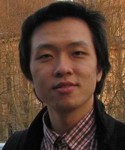五室学术报告通知
应田彤研究员邀请,荷兰IMEC HOLST 中心 Program Director Harmke de Groot教授将率学术团队来我所进行交流。
时间:2012年1月11日(周三)下午14:30 – 17:00
地点:上海市长宁路865号 8号楼2F会议室
报告题目:Radios living on air
报告人:Prof. Harmke de Groot
摘要:
Internet of things implies that any device will have capability to communicate with its surrounding. But some devices are so small that battery replacement during their lifetime is not practicable or even impossible. These devices have to be self-powered and/or running on a tiny battery for its complete lifetime in some cases more than 10 years. This presentation will look at some examples of such small devices and then discuss what new requirements rise on network architecture and radios.
 Harmke de Groot is Program Director of Ultra Low Power Wireless and DSP at Holst Centre/imec in the Netherlands. The team’s focus is on radio and DSP solutions in the microW to mW range enabling smart sensor networks and other ultra low power applications. Until May 2008 she was group program manager at the European Microsoft Innovation Center (EMIC) in Aachen, Germany, an applied research center collaborating with many industrial and academic partners. Since 1996, she held several positions in R&D at Philips and NXP in the area of communication systems and other networked embedded devices, amongst others she contributed to the development and standardization of the first Bluetooth solutions. De Groot is (co-)author of more than 50 publications and a book on embedded system design, holds 3 patents and is member of several expert groups. She holds a degree in Electrical Engineering from the University of Technology Eindhoven.
Harmke de Groot is Program Director of Ultra Low Power Wireless and DSP at Holst Centre/imec in the Netherlands. The team’s focus is on radio and DSP solutions in the microW to mW range enabling smart sensor networks and other ultra low power applications. Until May 2008 she was group program manager at the European Microsoft Innovation Center (EMIC) in Aachen, Germany, an applied research center collaborating with many industrial and academic partners. Since 1996, she held several positions in R&D at Philips and NXP in the area of communication systems and other networked embedded devices, amongst others she contributed to the development and standardization of the first Bluetooth solutions. De Groot is (co-)author of more than 50 publications and a book on embedded system design, holds 3 patents and is member of several expert groups. She holds a degree in Electrical Engineering from the University of Technology Eindhoven.
报告题目:Ultra Low Power Wireless – The Key Technology to Enable Internet of Things (IoT)
报告人: Dr. Li Huang
摘要:
The traditionally required expensive wiring installation or routine battery is one of the main bottlenecks for the realization of Internet of Things (IoT). Thus, the energy harvesting technology becomes very important, and is essential in achieving wireless autonomous transducer solutions (WATS). However, based on off-the-shelf components, the current energy harvesters cannot provide sufficient power for a typical wireless sensor node. A further power analysis shows that the wireless module is the main component whose power consumption needs to be significantly reduced. In this talk, we will discuss imec’s ultra low-power wireless chip solutions based on the super-regenerative receiver. More importantly, we will demonstrate its suitability to achieve WATS.
 Li Huang received his B. Eng degree in Electronics and Information Engineering in 2002 from Huazhong University of Science & Technology, Wuhan, China. He received his joint Ph.D. degree in Electrical Engineering in 2008 from both the National University of Singapore (NUS) and the Technical University Eindhoven (TU/e) under the Data Storage Institute (DSI) Scholarship and the DSI Scholarship.
Li Huang received his B. Eng degree in Electronics and Information Engineering in 2002 from Huazhong University of Science & Technology, Wuhan, China. He received his joint Ph.D. degree in Electrical Engineering in 2008 from both the National University of Singapore (NUS) and the Technical University Eindhoven (TU/e) under the Data Storage Institute (DSI) Scholarship and the DSI Scholarship.
He has been working for Imec at the Holst Centre since 2006 after finishing his PhD research, where he is now a senior researcher and the project leader for the short-range body area network (BAN) radio. His main research interests include system architecture, physical layer design, baseband signal processing, ultra-low power wireless communications, magnetic and optical recording.
Dr. Huang has more than 60 publications in related fields, one of which was among the top 10 of most downloaded papers in IEEE transactions on signal processing in Dec. 2007. He is the co-recipient of the outstanding paper award at MIXDES 2011. In addition, he received DSI’s most outstanding student award in 2005 for his excellent research performance in optical data storage systems.
欢迎大家踊跃参加!
中科院无线传感网与通信重点实验室(上海微系统所五室)
SIMIT-IMEC 物联网联合实验室